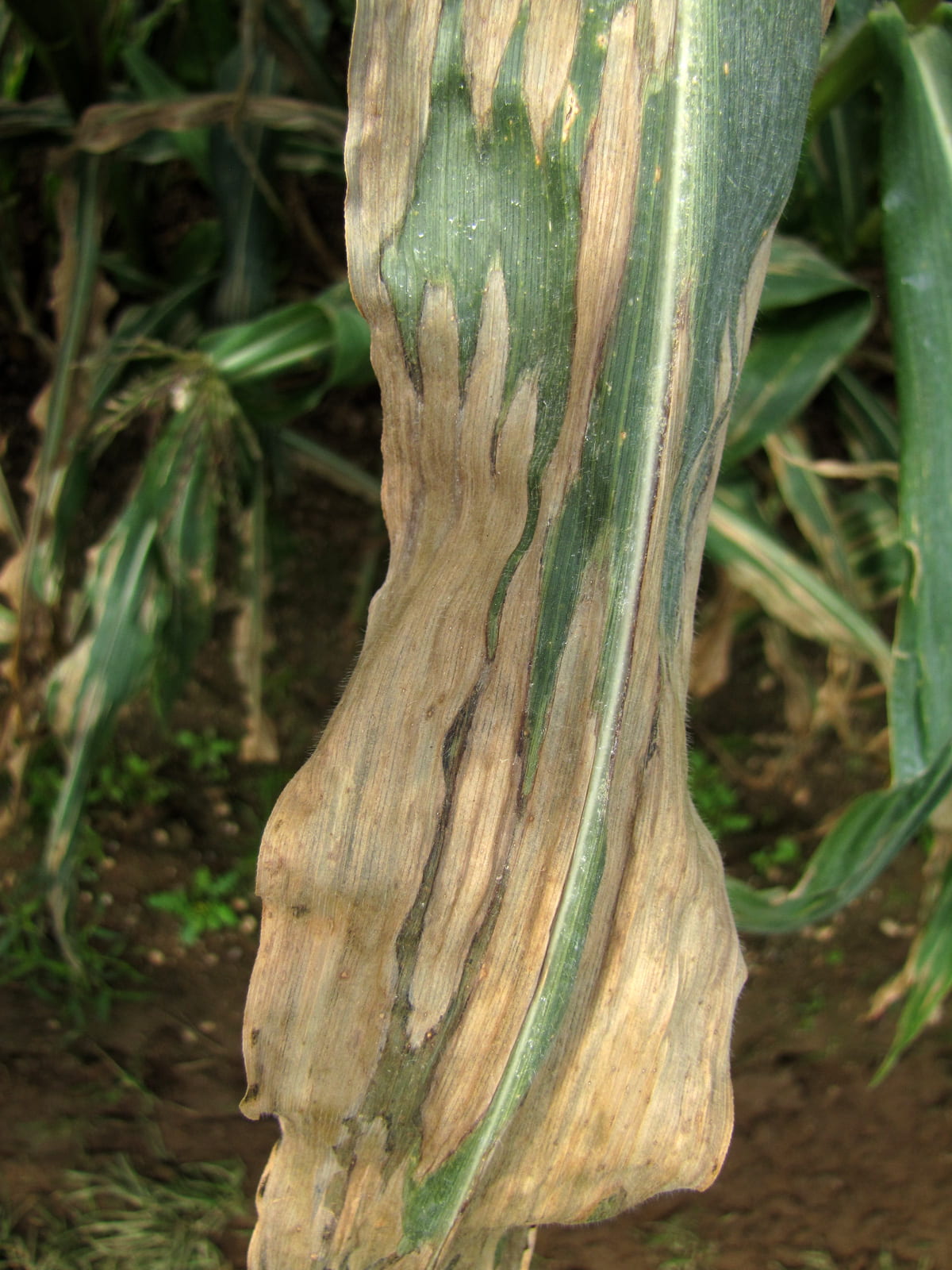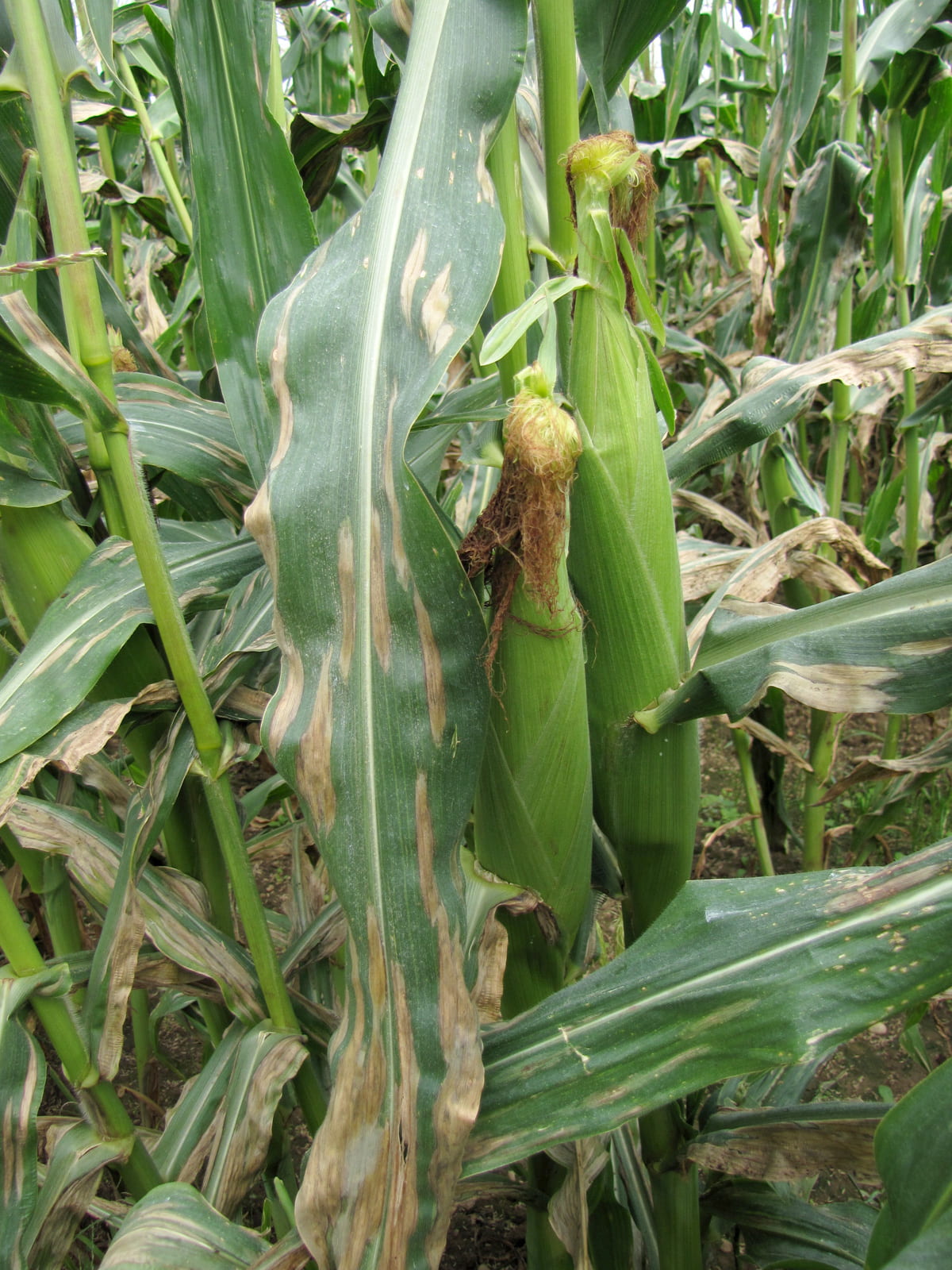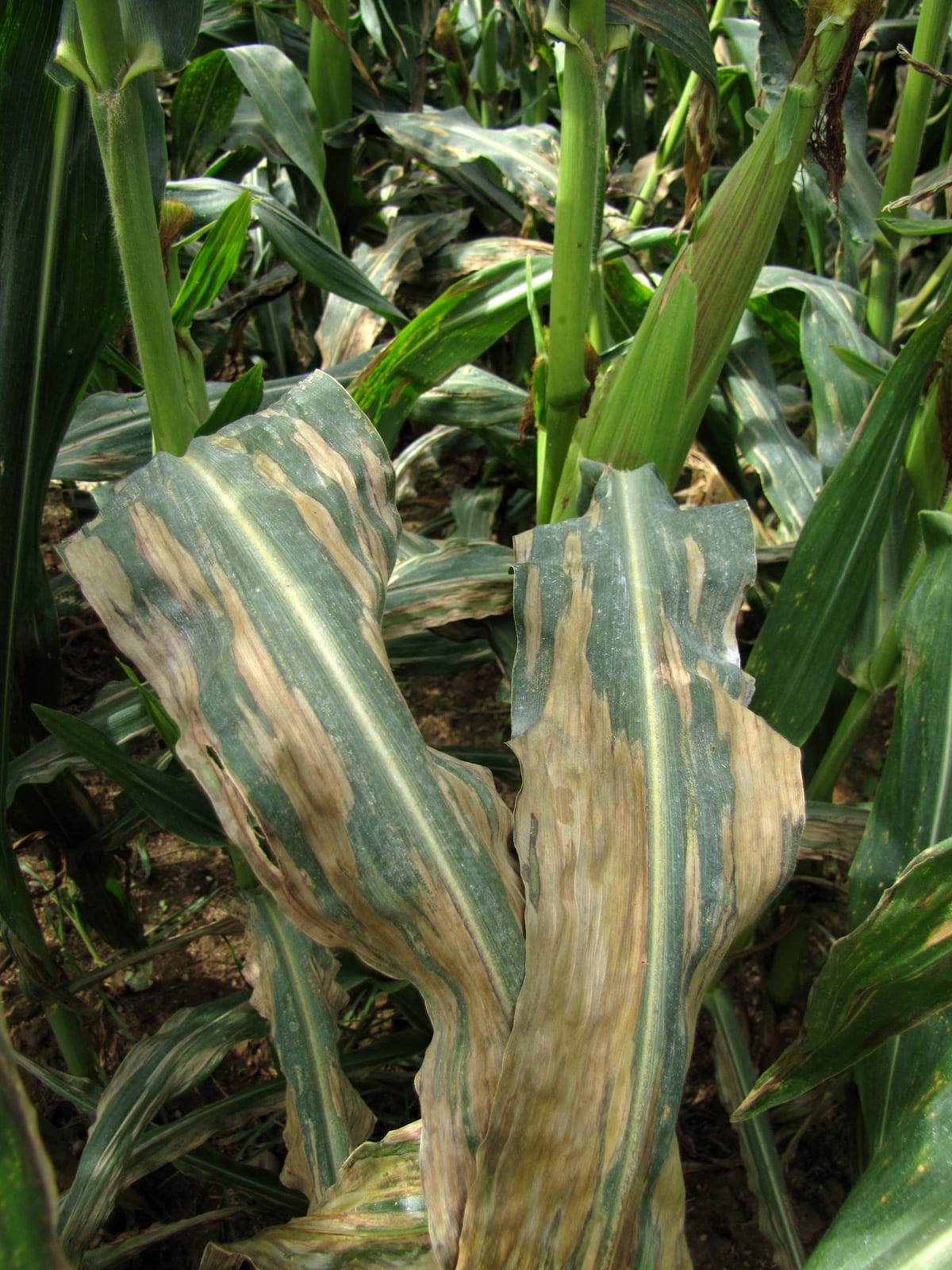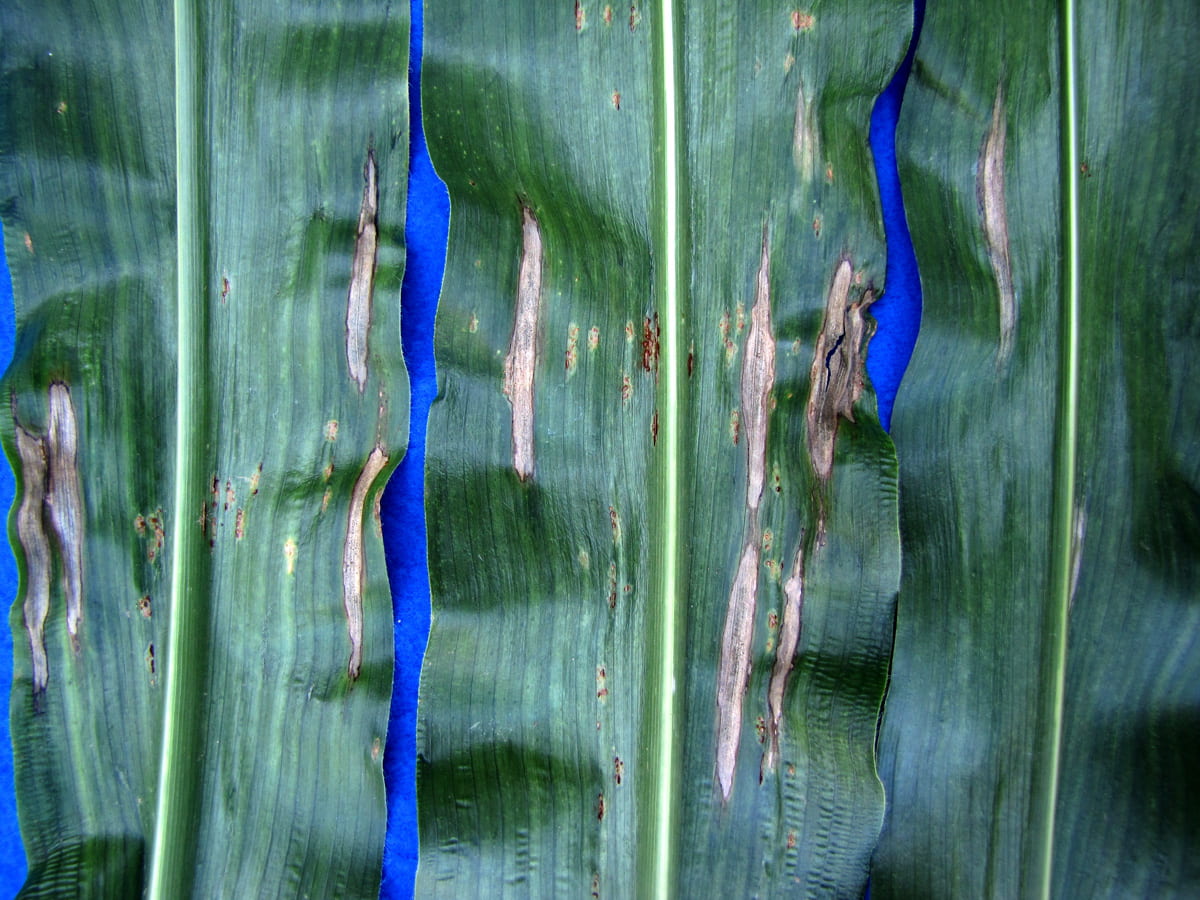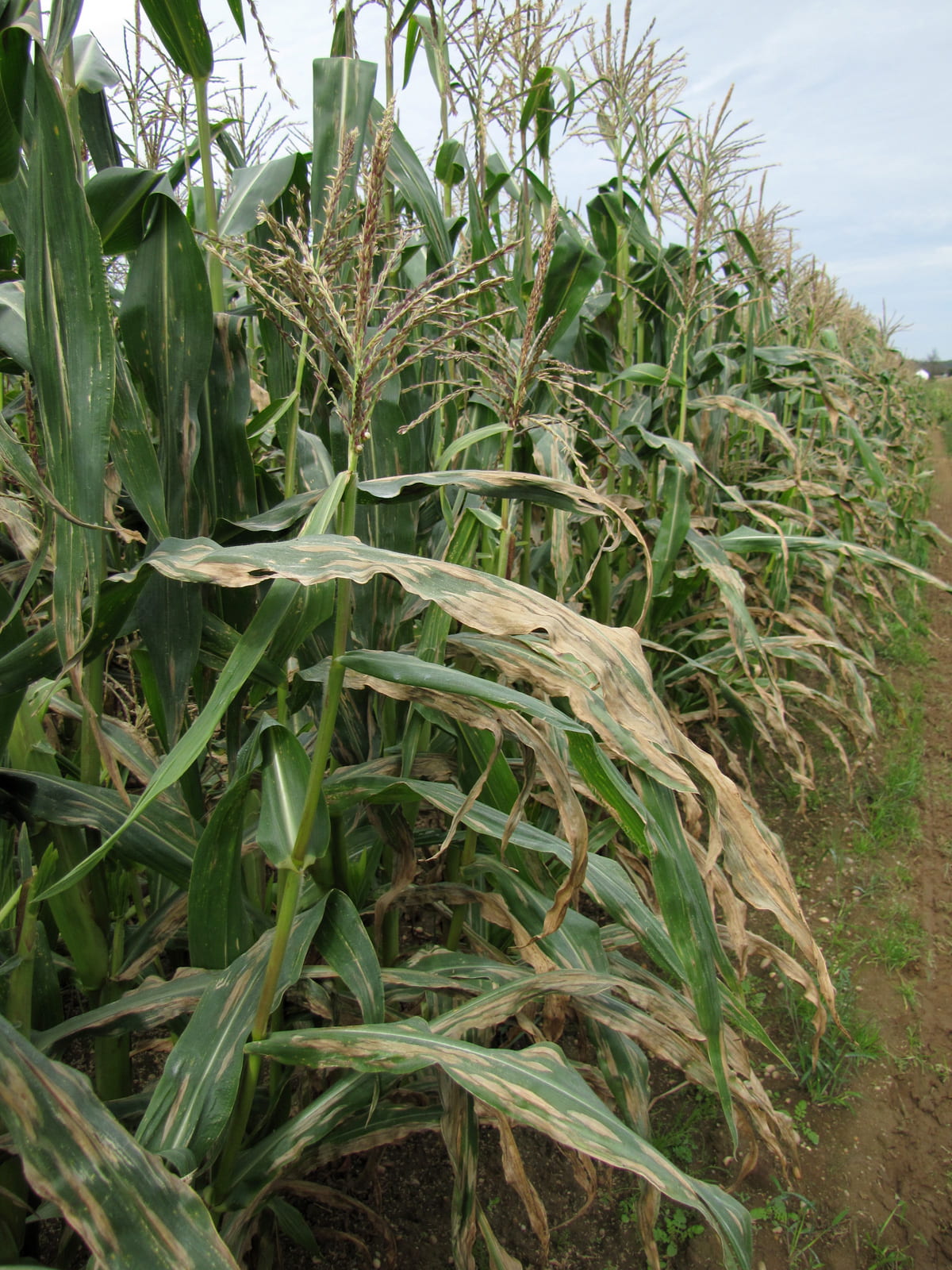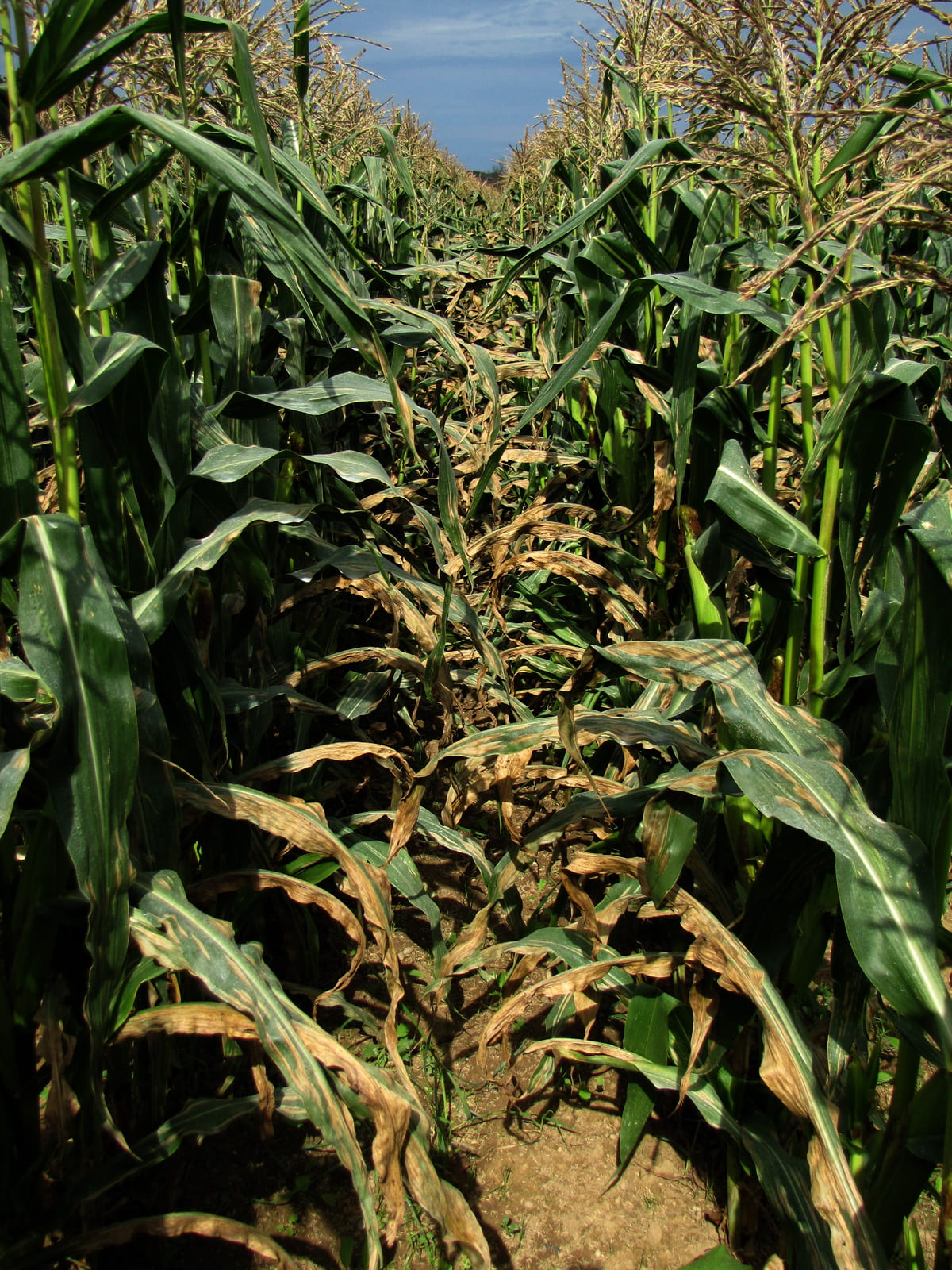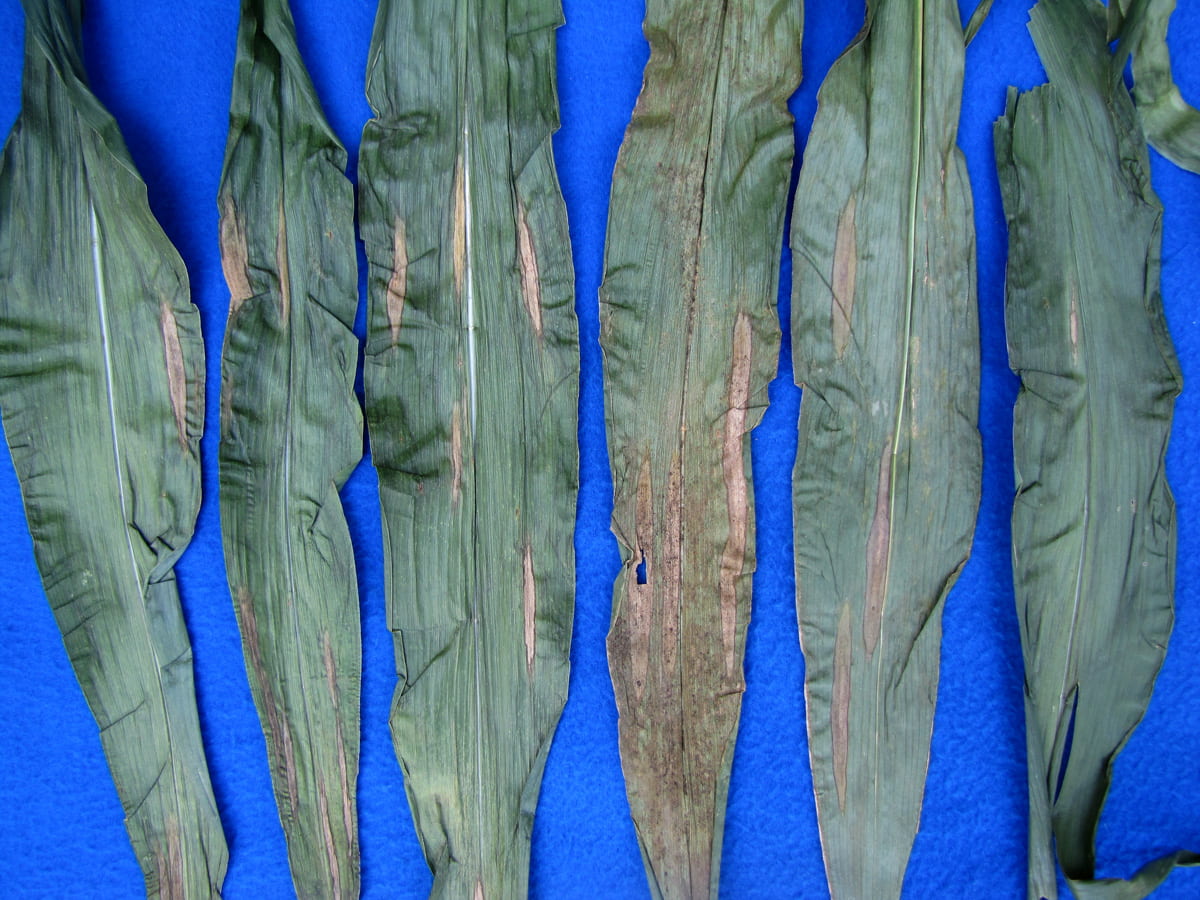Symptoms of northern corn leaf blight (NCLB) have been observed in sweet corn plantings on Long Island since 2012. The disease also occurs elsewhere in the northeast. Severity varies with environmental conditions and fungicide use. This is not a new fungal disease of corn (it was first reported in NY in 1878), but it had not been observed on Long Island for at least 20 years before August 2012 when NCLB was found to be severely affecting some plantings on Long Island.
It had been reported before 2012 as increasing in importance on field corn in the northeast and on sweet corn in New England. Increase in disease occurrence likely reflects change in the pathogen such that it is no longer suppressed by resistance genes in field corn varieties. Race 0 is thought to still dominant, but Race 1 has been detected; it overcomes the main major resistance gene, Ht1. Greater disease development in field corn results in more inoculum to affect sweet corn. Another factor may be storms that have been occurring during August with patterns that facility pathogen movement and disease development.
The pathogen produces an abundance of spores that are dispersed by wind. Numerous spores were observed on spots examined microscopically. This likely is how the pathogen came to Long Island and why the disease was widespread in 2012. A biologically similar pathogen, which causes southern corn leaf blight, moved from the Gulf of Mexico to Canada during one season in the 1970s. NCLB is expected to occur again because the pathogen survives in crop debris.
Favorable conditions for the pathogen are moderate temperatures (64 – 81 F) and leaf wetness from rain, dew or fog for at least 6 hours.
Leaf spots are moderately large and long (1 to 5 inches), elliptical, and grayish green becoming tan with age. Their shape resembles a cigar or boat. Older leaves tend to be affected first. Similar to rust, this disease could impact ear quality if it develops on husks. Left unmanaged, NCLB reportedly can develop rapidly rending a crop completely blighted and appearing as affected by frost.
A primary reason to manage this disease is to minimize symptoms on husks, which can cause them to look old. Additionally, yield can be reduced when NCLB is severe. Grain yield of processed corn reportedly can sustain losses of up to 50% when the disease is established before silking; minimal losses in yield occur when the disease is delayed until 6 weeks after silking.
Cultural management practices include incorporating debris after harvest and rotating crop land. However, since the pathogen produces spores easily dispersed by wind, these practices may not contribute as much to control of this pathogen as for others that produce larger, heavier spores. The benefits to soil health of reduced tillage in many cases will outweigh the benefits of reducing initial inoculum by plowing in debris. Growing a resistant variety is an effective practice. ex08767143 is resistant. While not bred to be resistant, Obsession was less severely affected by NCLB than several other varieties. Providence was among the more severely affected varieties in 2012.
There are 2 groups of targeted fungicides effective for NCLB: FRAC Group 11 (Quadris and Headline) and Group 3 (includes PropiMax and Tilt). Alternate among these groups and tank mix with a protectant fungicide (e.g. Bravo or Dithane) to manage resistance developing in the pathogen. Starting early in disease development, when very few symptoms are present, is critical to successful control of most fungal diseases, including NCLB. Other fungicides labeled for NCLB contain active ingredients in both FRAC fungicide groups: Headline AMP, Quilt and Stratego YLD. These are a good choice when only one or two applications are economical, as is often the case with field corn.
Please Note: Fungicides mentioned are for use in commercial production, not gardens. The specific directions on pesticide labels must be adhered to — they supersede these recommendations if there is a conflict. Any reference to commercial products, trade or brand names, is for information only; no endorsement is intended. For up-to-date information on labeled conventional fungicides see Cornell Integrated Crop and Pest Management Guidelines for Commercial Vegetable Production and biopesticides see the Biopesticides website.

In the close-up above of a NCLB lesion the pathogen’s spores are visible, giving the lesion a dusty or dirty appearance.



